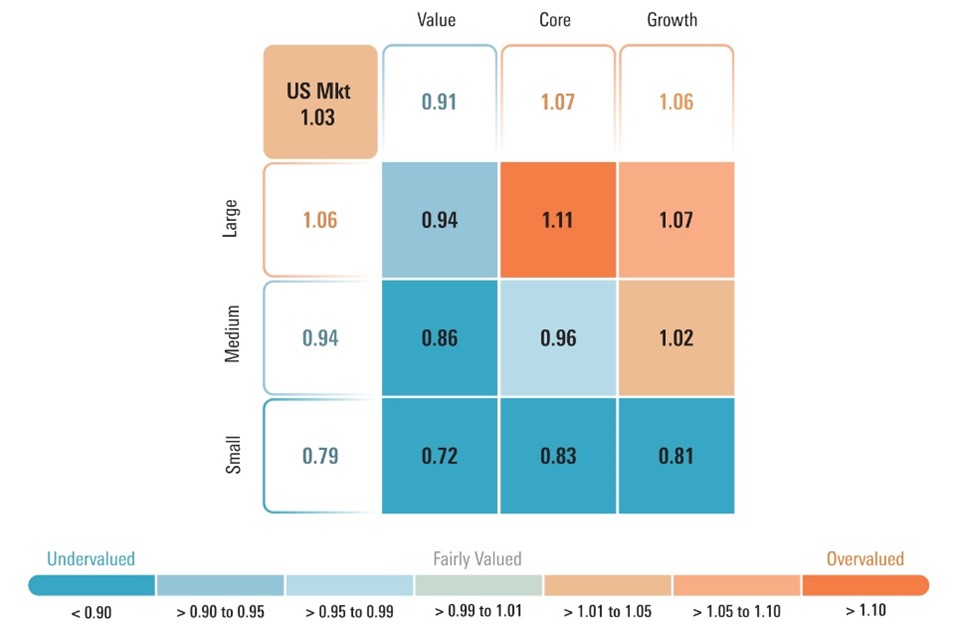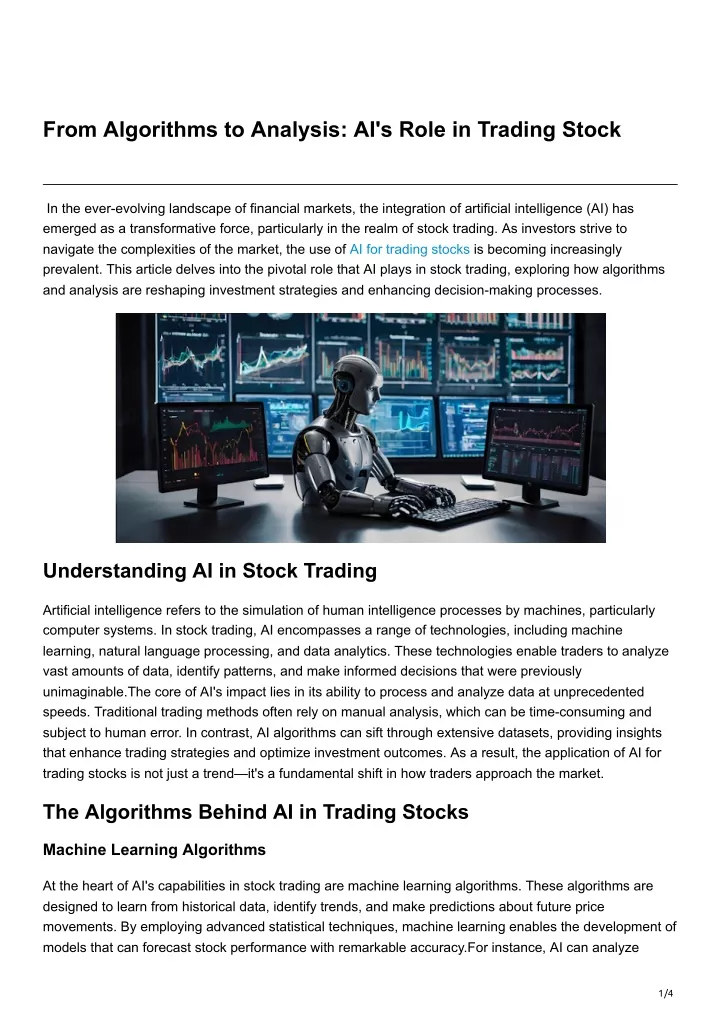20 New Facts For Choosing AI Stock Predictions Analysis Sites
20 New Facts For Choosing AI Stock Predictions Analysis Sites
Blog Article
Top 10 Tips To Help Determine The Costs And Prices Of Ai Trading Platforms That Can Predict Or Analyze The Prices Of Stocks.
It is crucial to evaluate the cost and pricing of AI trading platforms which predict or analyze stock prices. This will allow you to avoid hidden costs or expenses. Prices can be very different, so it's important to be aware of what you're getting value for your money. Here are the 10 best ways to evaluate the cost and pricing.
1. Understanding the Pricing Model
Subscription-based : Determine whether there's a monthly fee or an annual fee and what features are included in each level.
Pay-per-use: Check that the platform's charges are based on usage, such as number of trades (or request for data) or predictions.
Freemium-model: Evaluate whether it provides an initial free version with limitations in functionality, and charges for premium functions.
2. Compare Pricing Tiers
Check out the features offered by the various price levels, e.g. Basic, Professional Enterprise, and Basic.
Scalability: Ensure the pricing tiers are in line to your requirements, regardless of whether you're an individual trader a professional or an institutional member.
Upgrade flexibility: See the possibility of being easily upgraded or decreased as your needs change.
3. Evaluate Hidden Costs
Data charges are a matter of fact. Find out if you are required to pay for access to premium data.
Brokerage costs Check whether the platform charges additional charges to conduct trades or connect with brokers.
API usage: Assess if there are extra costs for API access or for high-frequency API use.
4. Demos and Free Trials, and Test Drives
Trial period - Search for platforms that provide the option of a trial or demo so you can test the features before you commit.
Limitations of the trial: Verify if it includes all features, or if there are limitations regarding functionality.
If the platform is not right for you, make sure that you have the option to remove the trial.
5. Take a look at the latest deals and offers
Discounts for annual subscriptions: Check whether the platform provides discounts on annual subscriptions when compared to monthly plans.
Referral programs. Make sure the platform gives credits or discounts for referring users.
Prices for institutions If you're part of a company which is larger, inquire about bulk or institution pricing.
6. Assess Return on Investment (ROI)
Cost vs. value - Find out if the platform's features, predictions and cost are worth the cost. For example, does it assist you in making better trading decisions or reduce time?
Record of performance: Check the platform's success rate or testimonials from users to determine the potential return on investment.
Costs of other platforms: Compare the costs of the platform against the possible cost of not using it (e.g. missed opportunities, time spent on manual analysis).
Review Policies on Cancellation and Refunds
You can cancel your subscription at any time, without incurring penalties or fees.
Refund Policy: Find out that your service allows you to get a refund if any of the subscription is not used.
Auto-renewal: Check whether the platform auto-renews your subscription, and how you can decide to stop it.
8. Review Pricing Transparency
A clear price page Make sure that the platform is equipped with a clear and precise pricing page with no hidden charges.
Customer support: Call customer support to discuss any pricing issues or costs.
Contract Terms: Know the commitments and penalties over the long term by reviewing the contract terms.
9. Compare yourself with your competitors
Comparing the features and pricing of different platforms is an excellent method to ensure you're getting a good deal.
Feedback from users: Learn what others think of the platform to determine if it is worth the cost.
Market positioning: Find out whether it's priced at the high end, mid-range or low-cost choice, and if that aligns with what you would expect.
10. Cost estimates for Long-Term
Price hikes: Check out the history of the platform in the past and see how frequently it has raised prices.
Updates to features: See whether your current plan contains new features or needs an upgrade.
Costs for scaling: Ensure that the pricing of your platform is reasonable in the event that your trading activities or data needs grow.
Bonus Tips
Trials for free on multiple platforms are available to test and compare the value and performance of different platforms.
Negotiate pricing: If you're a frequent user or a member of an institution, inquire about custom pricing or discounts.
Check out educational resources. Many platforms provide educational materials or tools which could be an excellent addition to the features they already have.
These guidelines will allow you to determine the cost and price of AI trading platforms that can predict or analyze stock prices. In this way, you'll be able to select the one that best meets your needs and budget, and has the features and performance you need. A balanced platform can offer you the best of both worlds cost and performance. View the top rated chatgpt copyright hints for more info including ai for investing, ai stock trading app, ai stock trading, ai for investing, ai trading, ai investment app, ai stock trading bot free, ai for investing, ai stock market, ai investing app and more.
Top 10 Tips For Assessing Regulatory Compliance Using Ai For Stock Predicting/Analyzing Trading Platforms
Compliance with regulations is an essential factor in evaluating trading platforms that use AI. Compliance ensures that the operation of a platform is within the legal frameworks. Data of users is secured and financial regulations are adhered to, which reduces any risk of legal problems. Here are top 10 tips on how to evaluate the level of compliance these platforms have.
1. Check your license and registration
Regulators: Check that the platform is certified and registered with relevant financial regulatory authorities (e.g. SEC in U.S.A., FCA UK, ASIC Australia).
Broker partnerships: If the platform is integrated with brokers, ensure that brokers are also licensed and properly regulated.
Public records: Visit the website of the regulator to see whether the platform was registered or if it has ever violated the law.
2. Assessment of the data privacy Compliance
GDPR: Make sure that your website adheres to the General Data Protection Regulation.
CCPA For Californian users Check compliance with California Consumer Privacy Act.
Data handling policy: Ensure you review the platform's privacy policies to understand the way in which user data is collected and stored.
3. Review the Anti-Money Laundering(AML) Measures
AML policies - Ensure that your platform's AML policies are robust and effective in detecting, prevent and detect money laundering.
KYC procedures: Check whether the platform is following Know Your Customer (KYC) procedures to verify the identities of users.
Examine the platform's monitoring of transactions. Does it keep track of transactions and report suspicious activity to relevant authorities?
4. Make sure you are in compliance with Trading Regulations
Market manipulation: Be sure that the platform has measures in place to prevent any market manipulation, including fake trading or wash trading.
Types of orders. Check to see whether your platform meets the regulations for orders.
Best execution : Ensure that the platform is using top execution techniques to complete trades at the lowest cost.
5. Cybersecurity Assessment
Data encryption: Ensure that the platform uses encryption to safeguard data either in transit or when it is at rest.
Response to incidents. Verify that there is clearly identified incident response plan for the platform to address cyber attacks as well as data breaches.
Certifications: Determine if a platform is certified to be secure (e.g. ISO 27001, SOC 2)
6. Transparency Evaluation and Disclosure
Fee disclosure: Ensure the platform is clear about any fees, any hidden or additional charges.
Risk disclosure: Verify whether the platform includes explicit risk disclosures. Particularly for high-risk and leveraged trading strategies.
Performance reporting: Ensure that the platform is transparent and accurate reports regarding its AI models.
7. Check the Compliance with International Regulations
Cross-border Trading: If you're trading involves international trade You must make sure that the platform you use meets the requirements of each regulatory jurisdiction.
Tax reporting: See whether the platform provides tools or reports that help users comply with tax laws.
Compliance with international sanctions: Make sure the platform adheres strictly to these and doesn't allow trading between countries or entities that are banned.
8. Review Record-Keeping, Audit Trails
Transaction records: Make sure the platform keeps detailed records of every transaction, both for the purposes of auditing and regulation.
Recordings of user activity: Check whether the platform records user activity including logins or trades, as well as any modifications to settings for your account.
Audit readiness: Determine if the platform is able to provide documentation and logs in case of a regulatory audit.
9. Examine compliance with AI-specific Regulations
Algorithmic Trading Rules If your platform allows algorithmic trades, make sure it adheres to regulations such as MiFID II (in Europe) or Reg SCI (in the U.S.).
Fairness and bias: Check whether the platform monitors and mitigates biases in its AI models to ensure fair and ethical trading.
Explainability - Make sure that the platform is able to clearly and concisely explain regarding AI-driven decisions, predictions, etc. as required by certain rules.
Review the User Feedback and Regulatory Histories
User reviews: Use user feedback to determine the platform's regulatory compliance.
Regulatory history: Verify if any regulatory violations have been committed, and also penalties and fines.
Third-party Audits: Verify that the platform undergoes third-party audits to ensure that the platform is conforming to all laws and regulations.
Bonus Tips
Legal consultation: Consult with an expert in law on the compliance of the platform with relevant laws.
Trial period: Make use of a no-cost demo or trial to test the features of the platform that are compliant.
Support for customers: Make sure the platform offers assistance for compliance-related questions or problems.
Follow these tips to evaluate the regulatory compliance and security of your interests. Compliance reduces legal risk and builds trust on the platform. Have a look at the most popular ai share trading info for website info including free ai stock picker, can ai predict stock market, invest ai, ai software stocks, stock trading ai, ai stock analysis, ai software stocks, ai for trading stocks, chart analysis ai, invest ai and more.